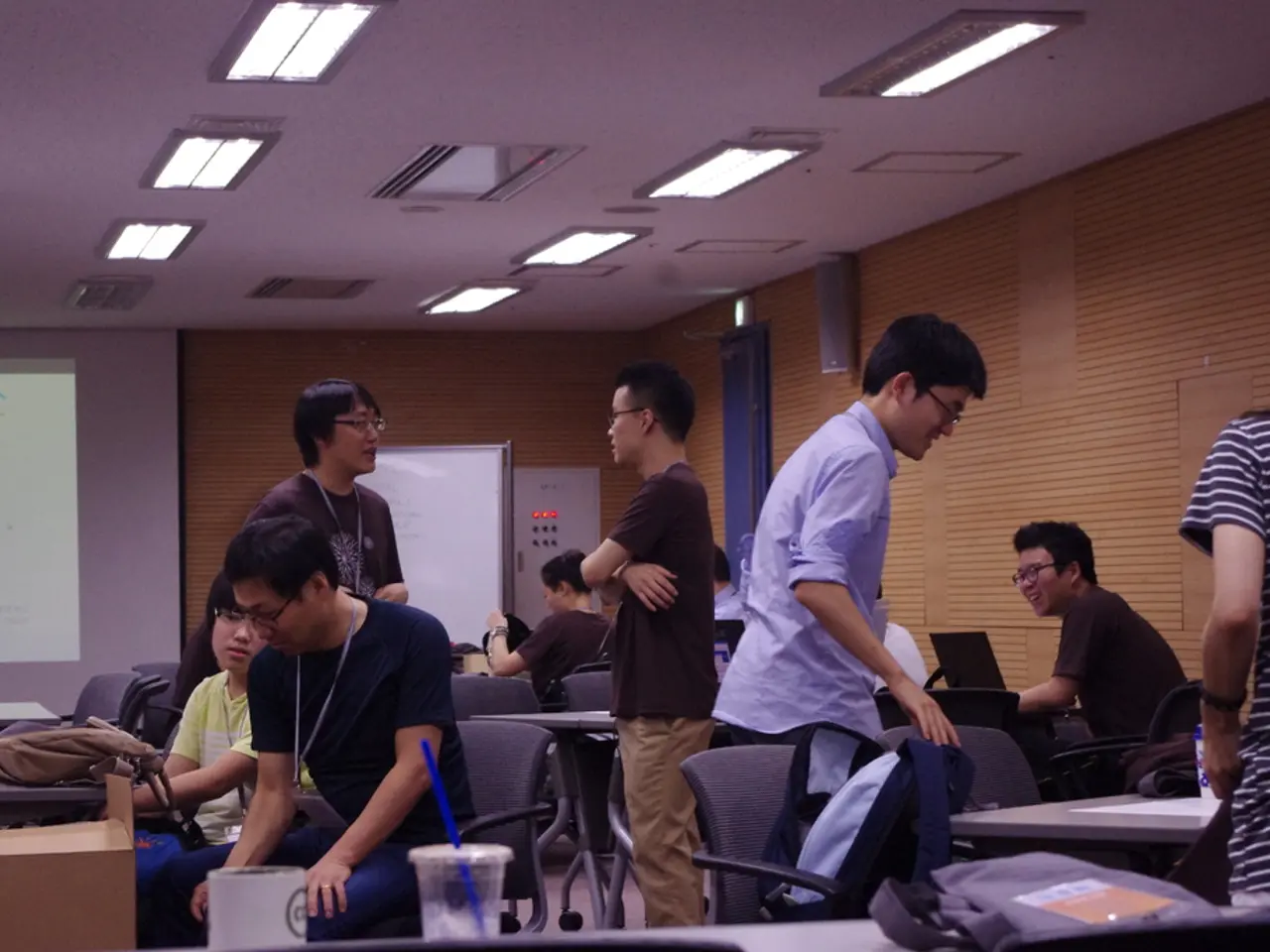Boosting Interaction via Peer-Taught Education in Online Learning
======================================================================================
In the realm of e-learning, peer learning has emerged as a powerful tool for enhancing academic outcomes. By fostering collaborative spaces, promoting active engagement, and encouraging mutual support, peer learning can create a more interactive and engaging learning experience.
Best Practices for Implementing Peer Learning
Successful peer learning in e-learning environments relies on several key strategies. Platforms like YMetaconnect, for instance, form small "Thinkers' Communities" or study circles that meet regularly online, guided by mentors who moderate and train students to provide structured, reflective feedback to peers. This approach builds analytical thinking, self-assessment skills, and emotional intelligence, enhancing academic outcomes [1].
Creating a positive and safe environment is crucial for effective peer-to-peer learning. Learners should feel comfortable asking questions without fear of embarrassment, and respect should be maintained in communications. Facilitators should maintain objectivity and support conversational flow without dominating discussions, which nurtures trust and openness [3].
Interactive learning systems benefit from combining peer feedback with social learning strategies. For example, prompting learners to post takeaways or solve problems and respond to others post-lesson fosters active participation and retention [2]. Allowing learners some control over course navigation—enabling them to revisit or skip content based on prior knowledge—further personalizes and optimizes the learning experience [2].
Effective Communication and Timely Feedback
Clear channels for dialogue—such as video office hours, quick polls, voice notes, and rapid feedback (e.g., within 24 hours)—help maintain engagement and clarify misunderstandings swiftly. Incorporating peer-review circles inside learning platforms enhances collaborative learning and learner motivation [4].
Challenges and Solutions
Assessment within peer learning presents various challenges, such as the difficulty in evaluating peers' contributions objectively and the integration of evaluation tools that may not always align with the objectives of peer learning. To address these challenges, it is essential to establish clear guidelines for peer learning, including specific goals, communication protocols, and assessment criteria [5].
Diversity in learning styles can create both opportunities and challenges within peer learning environments. Encouraging collaboration by pairing individuals with complementary styles, promoting an inclusive atmosphere that values each learner's unique approach, and providing adequate support resources enhances the peer learning experience [6].
Technological limitations, such as inadequate access to reliable internet or incompatible devices, can obstruct seamless communication in peer learning environments. Addressing these challenges requires strategies such as adopting flexible communication tools and fostering an inclusive learning atmosphere [7].
Emerging Trends
Emerging trends in peer learning within e-learning are shaped by advancements in technology, such as the integration of artificial intelligence (AI), immersive technologies like virtual reality (VR) and augmented reality (AR), and social learning platforms [8].
In conclusion, realizing the full potential of peer learning in e-learning platforms requires creating environments that promote collaboration and interaction among learners, integrating tools that facilitate communication, effective design considerations, instructor involvement, and a focus on overcoming inherent challenges. By doing so, we can foster a more interactive, engaging, and supportive learning community.
References
[1] Dillenbourg, P., & Jermann, F. (1996). Peer Learning in Computer-Supported Collaborative Learning. Educational Technology & Society, 1(2), 9-18. [2] Chan, K. M., & Ko, C. L. (2001). Collaborative Learning in Computer-Mediated Communication: A Review of the Literature. Educational Technology & Society, 4(1), 1-12. [3] Koschmann, T., & Zemel, R. (1998). The Role of Interaction in Collaborative Learning. Educational Psychologist, 33(2), 89-104. [4] Slavin, R. E. (1995). Cooperative Learning. Review of Educational Research, 65(3), 221-253. [5] Hmelo-Silver, C. E., & Hung, T. (2004). Designing for Transfer: A Cognitive View of Learning in the Digital Age. Educational Psychologist, 39(1), 1-16. [6] Johnson, D. W., Johnson, R. T., & Smith, K. A. (1998). Cooperative Learning: Increasing Student Achievement. Phi Delta Kappan, 80(2), 134-141. [7] Kozma, R. B. (1994). The Role of Technology in Education: A Cognitive Perspective. Educational Psychologist, 29(3), 183-197. [8] Arroyo, L. A., & Suthers, D. D. (2012). The Role of Social Interaction in Computer-Supported Collaborative Learning. Journal of the Learning Sciences, 21(4), 435-465.
In the realm of e-learning and education-and-self-development, effective peer learning can be implemented through platforms like YMetaconnect, which form small "Thinkers' Communities" for online-education and learning, providing guided discussions and structured, reflective feedback.
Successful peer learning requires a positive and safe environment where learners can ask questions comfortably, maintain respect in communications, and have clear channels for dialogue, such as video office hours, quick polls, and rapid feedback.




